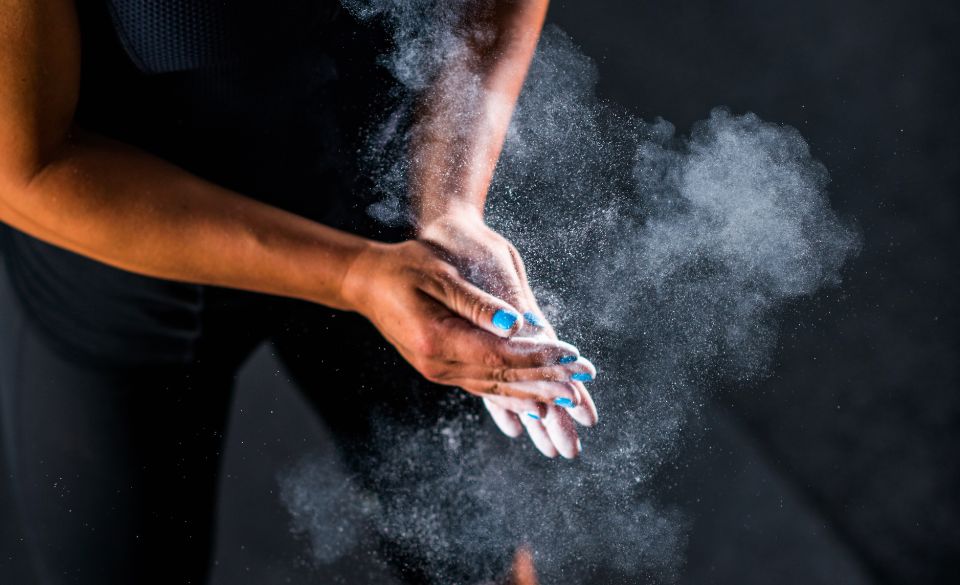
Why Do Weightlifters Use Chalk – A Complete Guide
Page Contents
Weightlifting is a popular form of exercise, and many people use chalk to improve their grip on the weights. But why do weightlifters use chalk, and what are the benefits? In this post, we’ll take a look at some of the reasons why athletes use chalk while lifting weights. We’ll also discuss the potential dangers of using chalk and how to stay safe when lifting weights. Stay tuned for more information!
What Is Chalk?
Chalk is a soft, white, porous sedimentary rock. It is composed of the mineral calcite (CaCO3), which is a form of calcium carbonate. It formed under the sea from the remains of marine organisms such as foraminifera and coccolithophores. Over time, it was compressed into layers and slowly hardened into stone.
Chalk has been used for centuries as a writing material. In fact, the word “chalk” comes from the Old English word “cealc”, which means “limestone”. It was first used in this way by the ancient Greeks and Romans. Today, it is still widely used in school classrooms around the world.
Chalk is also used in other ways. For example, it is sometimes used as an abrasive material for cleaning or polishing. It can also be used in gardening, as a soil amendment, or as fertilizer.
Whether you’re using it for school or play, chalk is a versatile material that has many uses. So the next time you see a piece of chalk, stop and think about all the different ways it can be used. You might be surprised at just how useful this humble substance can be.
Why Do Weightlifters Use Chalk?
When it comes to weightlifting, chalk is an important tool that can help lifters get a better grip on the bar. Chalk helps to absorb sweat and moisture, which can make the bar slippery and difficult to hold onto. In addition, chalk provides a bit of friction that can help lifters keep their hands from slipping during lifts.
Some lifters will apply chalk directly to their hands before lifting, while others will apply it to the bar itself. Chalk can also be used to mark your starting position on the bar, which can be helpful when performing multiple reps.
While some gyms may not allow the use of chalk, it is generally considered to be a harmless substance that can provide valuable benefits for weightlifters. So if you’re looking to get a better grip and improve your lifting performance, don’t be afraid to reach for the chalk!
Benefits of Using Chalk When Lifting Weights
There are many benefits of using chalk when lifting weights. Chalk helps to improve grip and prevents the hands from slipping on the bar. It also absorbs sweat and provides a dry surface for the hands to grip. This can help to increase your grip strength and improve your lifting performance.
Chalk can also help to increase your range of motion. When your hands are slippery, you may not be able to grip the bar as tightly, which can limit your range of motion. Chalk can help to provide a better grip, allowing you to lift heavier weights with a greater range of motion.
Overall, chalk provides many benefits for weightlifters. It can help to improve grip, absorb sweat, increase range of motion, and improve safety. If you are looking to improve your lifting performance or safety, then consider using chalk during your workouts.
What Happens If Weightlifters Use Too Much Chalk?
If you’re a weightlifter, then you know that chalk is an important part of your equipment. Chalk helps to keep your hands dry and provides extra grip, which can be essential when lifting heavy weights. However, using too much chalk can be counterproductive.
Too much chalk can increase drying time, which means that your hands will be more susceptible to sweat and slipping. It can also make it difficult to remove the chalk from your hands later on. If you don’t let the liquid chalk completely dry before lifting, you may find that it comes off on the barbell. So, next time you reach for the chalk, be sure to use it sparingly!
Why Is Chalk Not Allowed In Gyms?
There are a few reasons why chalk is not allowed in gyms. The first reason is that it can be a bit messy. Chalk can get everywhere and it can be difficult to clean up. It can also be dangerous if someone slips on it.
Another reason why chalk is not allowed in gyms is because it can damage the equipment. Chalk can scratch the paint or finish on weights and other gym equipment. It can also clog up machines like treadmills and ellipticals.
Finally, some people are allergic to chalk dust. This can cause respiratory problems and other health issues. For these reasons, it’s best to avoid using chalk in gyms. There are plenty of other options available that won’t cause these problems.
Best Replacement For Chalk
Chalk is a common tool used by weightlifters to improve their grip on the bar. However, chalk can be messy and difficult to clean up. There are several alternatives to chalk that can provide the same benefits without the mess.
Magnesium carbonate is one alternative to chalk that can be found in many gyms. This substance is similar to chalk in its ability to absorb moisture and improve grip. Magnesium carbonate is also non-toxic and does not create a mess when used.
Another alternative to chalk is rosin. Rosin is a sticky substance that is derived from pine trees. It can be applied directly to the hands or the bar, and it will provide a similar benefit as chalk in terms of improving grip. However, rosin can be difficult to remove and can cause stains on clothing.
A third alternative to chalk is liquid chalk. This substance is similar to regular chalk, but it comes in a liquid form. Liquid chalk can be applied directly to the hands or the bar, and it will dry quickly and provide a firm grip. However, liquid chalk can be messy and difficult to clean up.
Finally, some weightlifters prefer to use weightlifting straps instead of chalk. Straps provides a firm grip and can be easily removed when finished lifting. However, it can be costly and may need to be replaced frequently.
Weightlifters should experiment with different alternatives to chalk to find what works best for them. There is no one perfect solution for everyone, so it is important to find what works best for each individual.



